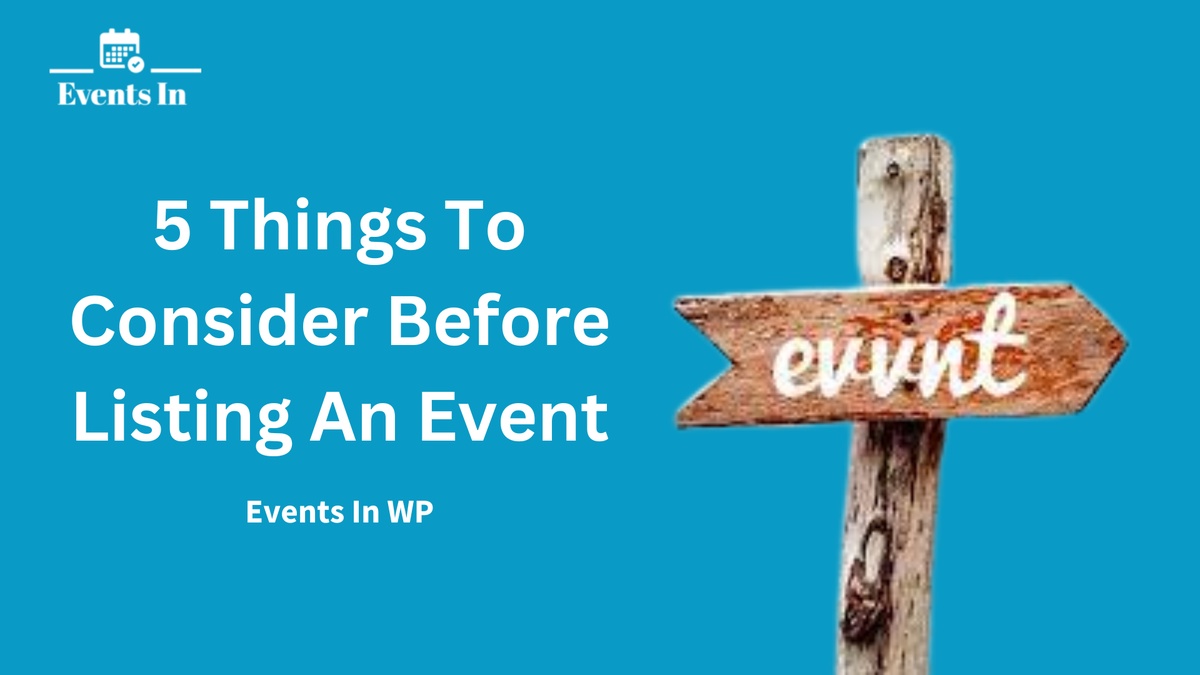Events are an integral part of any organization's outreach and engagement strategy. Whether you're hosting webinars, conferences, workshops, or even local meetups, creating a dedicated Events Listing page on your WordPress (WP) website is essential. An events listing page serves as a central hub for your audience to discover and register for upcoming events. In this blog post, we'll explore five key elements that should be included on your events listing page when using WordPress. These elements will not only enhance the user experience but also boost attendance and engagement.
Event Details
The most crucial aspect of your events listing page is, of course, the event details themselves. Ensure that each event entry includes:
- Event Title: A clear and catchy title that describes the event's purpose.
- Date and Time: Specify the event's date and starting time, and if it's a multi-day event, include the end date as well.
- Location: Provide the physical or virtual location, including the venue address or a link to the online platform.
- Description: Write a compelling, informative event description that highlights what attendees can expect, who the speakers or presenters are, and the event's objectives.
Registration or Ticketing Information
Make it easy for visitors to register or purchase tickets for your events directly from the listing page. You can achieve this by including:
- Registration Buttons: Add clear and prominent buttons that lead users to the registration or ticketing platform.
- Pricing Information: If your event has ticket pricing, display it prominently.
- Registration Deadline: If applicable, indicate the registration deadline to create a sense of urgency.
Visual Elements
Incorporate visuals to make your events listing page visually appealing and engaging. Include:
- Event Images: Use high-quality images that represent the event, such as banners, speaker photos, or promotional graphics.
- Thumbnails: Display small event images or logos next to event listings to help users quickly identify events.
- Video Previews: If available, embed video previews or trailers to give users a glimpse of what to expect.
Filters and Sorting Options
As your list of events grows, users will appreciate tools to filter and sort through the options. Consider adding:
- Search Bar: Implement a search bar so users can search for specific events by keywords or dates.
- Filter Options: Allow users to filter events by categories, topics, or locations.
- Sort By: Offer sorting options by date, popularity, or relevance to help users find events that interest them.
Social Sharing and Interaction
Encourage social sharing and interaction to boost your event's visibility and attendee engagement. Incorporate:
- Social Sharing Buttons: Include social sharing buttons on each event listing so users can easily share the event on their preferred social media platforms.
- Comment Section: Enable a comment section where users can ask questions, leave comments, or discuss the event.
- RSVP or Interested Buttons: Add buttons for users to express their interest or RSVP to an event directly from the listing page.
Conclusion
Creating a well-structured events listing page on your WordPress website is crucial for promoting and managing your events effectively. By including event details, registration information, visuals, filters, and social interaction features, you can enhance the user experience, boost attendance, and foster a sense of community around your events. With these elements in place, your WordPress events listing page will become a valuable resource for both you and your audience.
3,672 Characters
551 Words


No comments yet